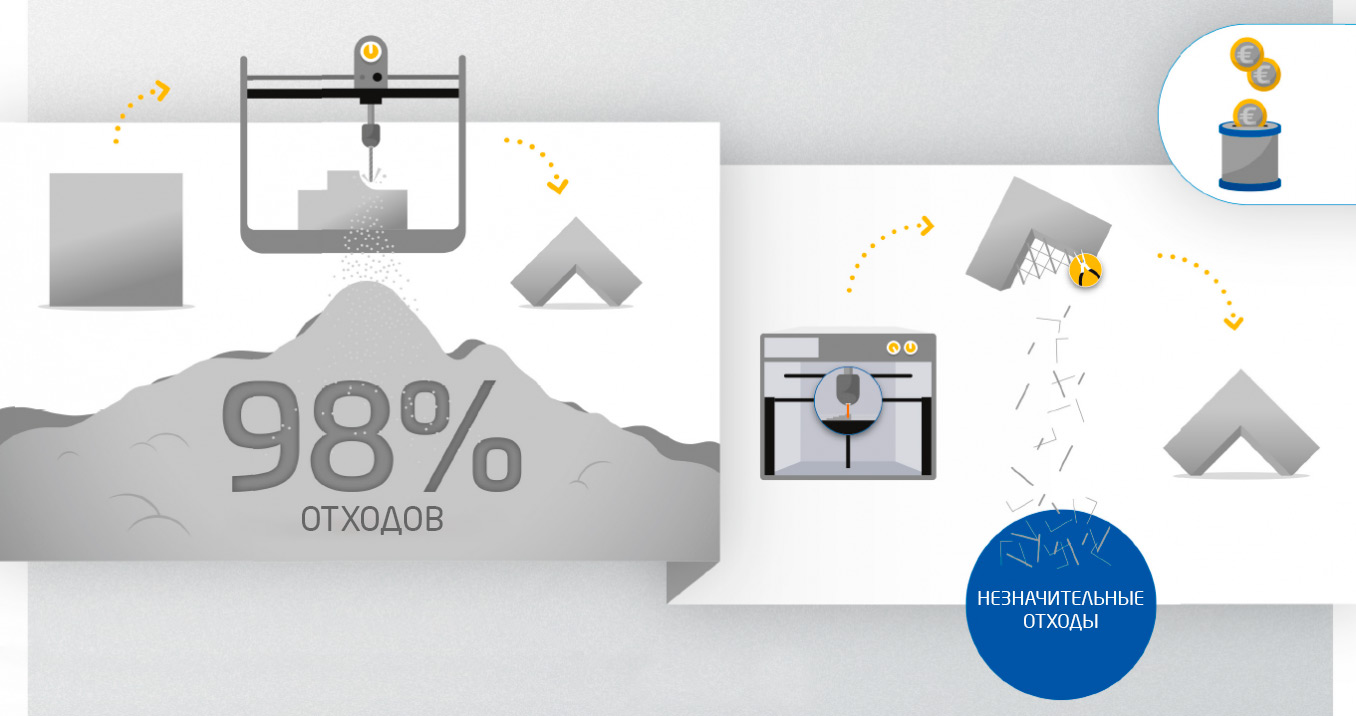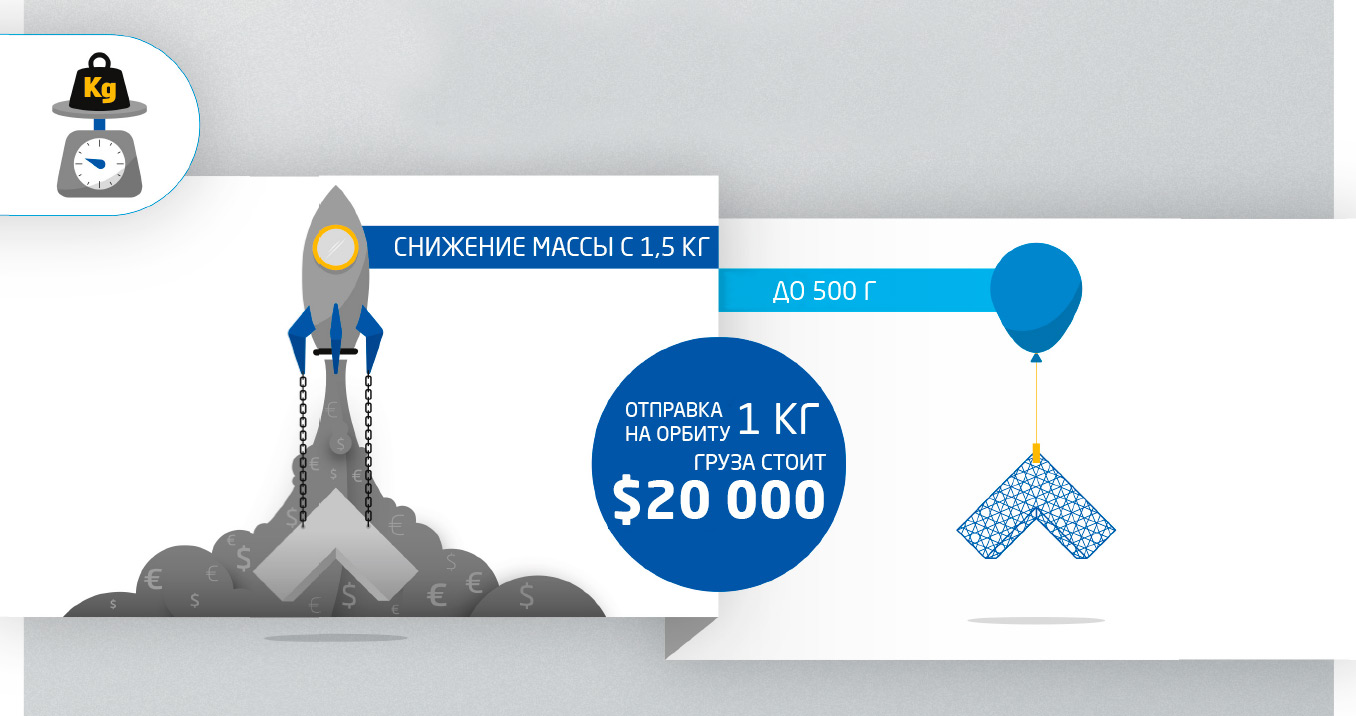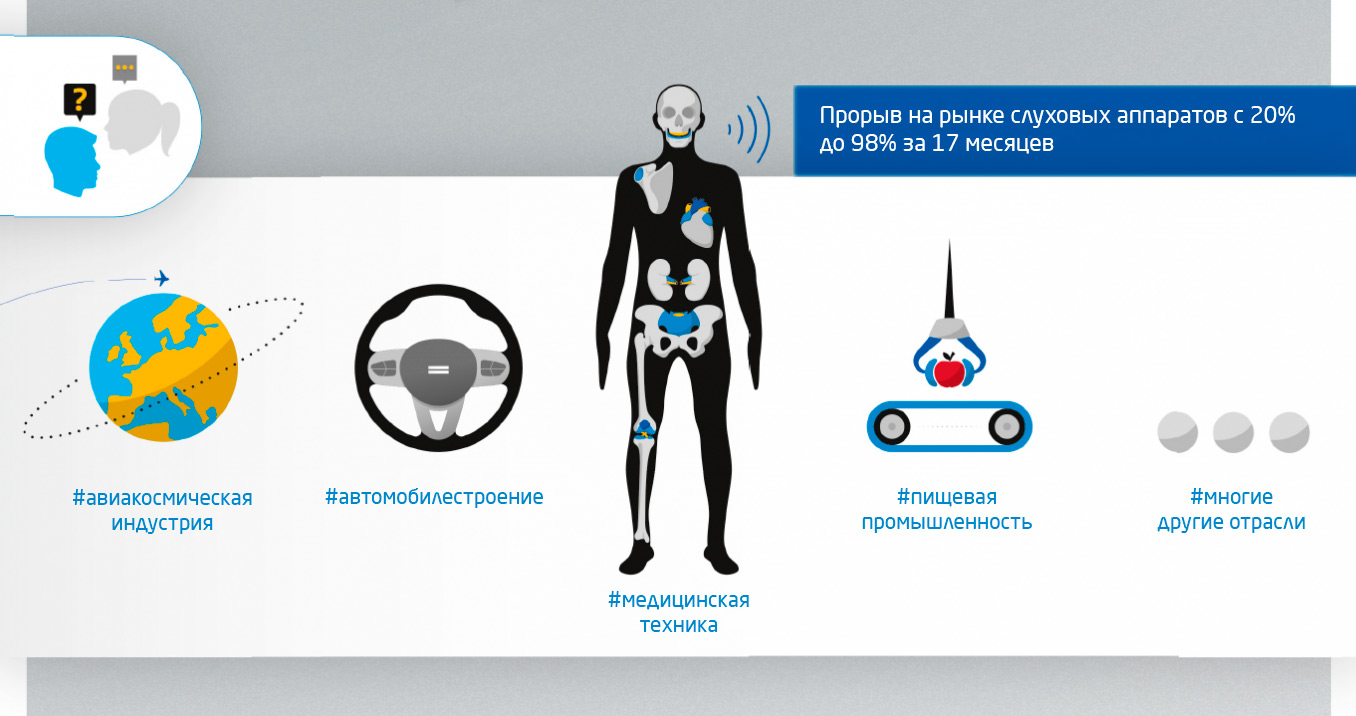5 reasons for moving to 3D printing of metal products
If you are engaged in the design or manufacture of metal parts, then you already know about some of the possibilities of 3D metal printing. You may even have thought about using additive technologies for the project. So what stops you? Maybe you are trying to build a system of arguments for this on your own, or the benefits are not entirely clear to you. In this material, we present our arguments for 3D metal printing - to help you develop your own.
First of all, it should be noted that 3D printing is now readily available, both in terms of the materials and properties that can be achieved, as well as in terms of software for designing, assembling and managing technological processes. At the same time, subcontracting or 3D printing as a service provides access to a wide range of printing technologies and materials, so you don’t need to immediately commit yourself to a specific machine or a specific method.
Obstacles to the use of 3D printing are manifold, and some of them are stronger where traditional metalworking methods are deeply rooted. Nevertheless, as we shall see, it is in this area that the main advantages of additive methods can give the greatest positive result.
')

The obvious, well-known advantage of additive manufacturing as a whole is a quicker transition from the project to the finished part. Time is saved largely due to the equipment.
3D printing does not require holders for parts of a specific shape; the maximum of what you need from special tools is the support that is generated during the printing process.
So you spend a few days instead of long weeks. InMotion, the team of the ambitious electric race car project for Le Mans 2019, was able to design and build a new lightweight titanium suspension within a week.
Regardless of what you are printing, the software used for preparing for 3D printing now allows you to automate or otherwise optimize many of the most labor-intensive aspects of setting up and preparing a design, which ensures highly efficient 3D printing processes.
Of course, time is money, so saving time on reducing downtime, reducing the time to move from project to product, and increasing productivity make sense. But 3D metal printing can produce even more direct financial effects.

If your activity is related to machining, then you know how much material is needed to begin the process of machining the part, and how much of it will remain when the part is ready. The rest is expensive scrap. It must be removed, transported, processed and paid for, in the case of metal, in the beginning it was an expensive raw material.
When you print metal parts on a 3D printer, you only apply material where it is needed. Waste is minimal. Almost all source materials are used in the final part (minus the supports created). In addition, when designing with traditional methods, it is often necessary to add unnecessary materials to avoid complexity or to ensure manufacturability. The pneumatic grip that Materialize redesigned for 3D aluminum printing ended up weighing about a quarter of the weight of the previous version, and cost less than a third of its previous price.
More efficient use of the material gives the effect of a chain reaction. For example, it provides more compact manufacturing operations because you need to buy, store and move less material. Weight reduction also affects not only the production of the part, but also the operating costs and performance. This is especially important in the aerospace industry, where every gram matters (sending one kilogram into orbit currently costs 20 thousand US dollars).
Another significant factor affecting the cost is again the equipment. Think about the number of specialized tools, fixtures, forms, or patterns that are involved in the manufacture of parts using traditional methods. Now imagine that most of them are in the past.

3D printing breaks a fundamental pattern in dealing with metal - that is difficult - this is bad. In metal parts printed on additive installation, complexity no longer leads to higher costs. This means that you can combine different functionalities in a single part printed on a 3D printer without fear of the increasing complexity of this part.
If earlier in your design there were several separate parts fastened with bolts or welded, now you can print one single piece for one approach. And even whole knots. This, in turn, will save on assembly costs, as well as on line maintenance, since the manufacture of assemblies completely eliminates risks such as leaks or damage to parts due to operator error during assembly.
You can also expand or improve the functionality by adding a supplement to the project. Additive methods allow you to implement complex internal structures , grids and channels that improve the passage of air flow or lubricant supply. External textures and surface reliefs can be created, for example, to improve tactile sensations or grip, or to connect with another part.

If earlier we created a project for launching into production, taking into account the limitations imposed by casting or machining, now 3D printing allows us to put the functions in the first place and the form in the second. We can design the part as it should be; Now we depend on the tools used in its manufacture.
Such a lifting of restrictions allows us to approach the design of parts in completely new ways and create forms and structures that were previously impossible or too expensive. Significant potential for innovation opens up.
3D printing is suitable for use in evolutionary projects. It makes it possible not only to speed up the release of the final product, but also to develop a final design solution with the help of fast iterations, with the ability to experience real detail every time. This means that the time interval between the manufacture of each prototype is sharply reduced, which creates space for experimentation and innovation. The result is the best end product.

All of the above will help maintain your competitive advantage as a manufacturer, designer, or innovator, but 3D printing also offers new opportunities to differentiate your product range. Additive production changes all existing ideas about economies of scale. Due to low initial costs, it becomes economical to release products in small batches, on order or with customization for mass customization. Thus it is possible to provide services in those niches that were previously too expensive. There are new opportunities.
The potential for creating new business models or product development strategies and the freedom of design that 3D printing provides requires a new, different way of thinking. Just as we learned how to design parts for milling, turning and casting, we need to learn how to think in terms of additive manufacturing. However, you can speed up your learning by starting small and share success stories in your team or company. This ensures that additive manufacturing becomes a natural part of your toolkit.
3D metal printing is on the verge of transition to the category of basic technologies. Be one step ahead - start implementing projects using this method.
Translation from English. The original of this material is on the Materialize website .
First of all, it should be noted that 3D printing is now readily available, both in terms of the materials and properties that can be achieved, as well as in terms of software for designing, assembling and managing technological processes. At the same time, subcontracting or 3D printing as a service provides access to a wide range of printing technologies and materials, so you don’t need to immediately commit yourself to a specific machine or a specific method.
Obstacles to the use of 3D printing are manifold, and some of them are stronger where traditional metalworking methods are deeply rooted. Nevertheless, as we shall see, it is in this area that the main advantages of additive methods can give the greatest positive result.
1. Save time: spend hours or days, not weeks and months
')

The obvious, well-known advantage of additive manufacturing as a whole is a quicker transition from the project to the finished part. Time is saved largely due to the equipment.
3D printing does not require holders for parts of a specific shape; the maximum of what you need from special tools is the support that is generated during the printing process.
So you spend a few days instead of long weeks. InMotion, the team of the ambitious electric race car project for Le Mans 2019, was able to design and build a new lightweight titanium suspension within a week.
Regardless of what you are printing, the software used for preparing for 3D printing now allows you to automate or otherwise optimize many of the most labor-intensive aspects of setting up and preparing a design, which ensures highly efficient 3D printing processes.
Of course, time is money, so saving time on reducing downtime, reducing the time to move from project to product, and increasing productivity make sense. But 3D metal printing can produce even more direct financial effects.
2. Save money: build up as opposed to grinding

If your activity is related to machining, then you know how much material is needed to begin the process of machining the part, and how much of it will remain when the part is ready. The rest is expensive scrap. It must be removed, transported, processed and paid for, in the case of metal, in the beginning it was an expensive raw material.
When you print metal parts on a 3D printer, you only apply material where it is needed. Waste is minimal. Almost all source materials are used in the final part (minus the supports created). In addition, when designing with traditional methods, it is often necessary to add unnecessary materials to avoid complexity or to ensure manufacturability. The pneumatic grip that Materialize redesigned for 3D aluminum printing ended up weighing about a quarter of the weight of the previous version, and cost less than a third of its previous price.
More efficient use of the material gives the effect of a chain reaction. For example, it provides more compact manufacturing operations because you need to buy, store and move less material. Weight reduction also affects not only the production of the part, but also the operating costs and performance. This is especially important in the aerospace industry, where every gram matters (sending one kilogram into orbit currently costs 20 thousand US dollars).
Another significant factor affecting the cost is again the equipment. Think about the number of specialized tools, fixtures, forms, or patterns that are involved in the manufacture of parts using traditional methods. Now imagine that most of them are in the past.
3. Do more: kill several birds with one stone

3D printing breaks a fundamental pattern in dealing with metal - that is difficult - this is bad. In metal parts printed on additive installation, complexity no longer leads to higher costs. This means that you can combine different functionalities in a single part printed on a 3D printer without fear of the increasing complexity of this part.
If earlier in your design there were several separate parts fastened with bolts or welded, now you can print one single piece for one approach. And even whole knots. This, in turn, will save on assembly costs, as well as on line maintenance, since the manufacture of assemblies completely eliminates risks such as leaks or damage to parts due to operator error during assembly.
You can also expand or improve the functionality by adding a supplement to the project. Additive methods allow you to implement complex internal structures , grids and channels that improve the passage of air flow or lubricant supply. External textures and surface reliefs can be created, for example, to improve tactile sensations or grip, or to connect with another part.
4. Do better: no limits

If earlier we created a project for launching into production, taking into account the limitations imposed by casting or machining, now 3D printing allows us to put the functions in the first place and the form in the second. We can design the part as it should be; Now we depend on the tools used in its manufacture.
Such a lifting of restrictions allows us to approach the design of parts in completely new ways and create forms and structures that were previously impossible or too expensive. Significant potential for innovation opens up.
3D printing is suitable for use in evolutionary projects. It makes it possible not only to speed up the release of the final product, but also to develop a final design solution with the help of fast iterations, with the ability to experience real detail every time. This means that the time interval between the manufacture of each prototype is sharply reduced, which creates space for experimentation and innovation. The result is the best end product.
5. Retain your competitive advantage.

All of the above will help maintain your competitive advantage as a manufacturer, designer, or innovator, but 3D printing also offers new opportunities to differentiate your product range. Additive production changes all existing ideas about economies of scale. Due to low initial costs, it becomes economical to release products in small batches, on order or with customization for mass customization. Thus it is possible to provide services in those niches that were previously too expensive. There are new opportunities.
The potential for creating new business models or product development strategies and the freedom of design that 3D printing provides requires a new, different way of thinking. Just as we learned how to design parts for milling, turning and casting, we need to learn how to think in terms of additive manufacturing. However, you can speed up your learning by starting small and share success stories in your team or company. This ensures that additive manufacturing becomes a natural part of your toolkit.
3D metal printing is on the verge of transition to the category of basic technologies. Be one step ahead - start implementing projects using this method.
Translation from English. The original of this material is on the Materialize website .
Source: https://habr.com/ru/post/443824/
All Articles